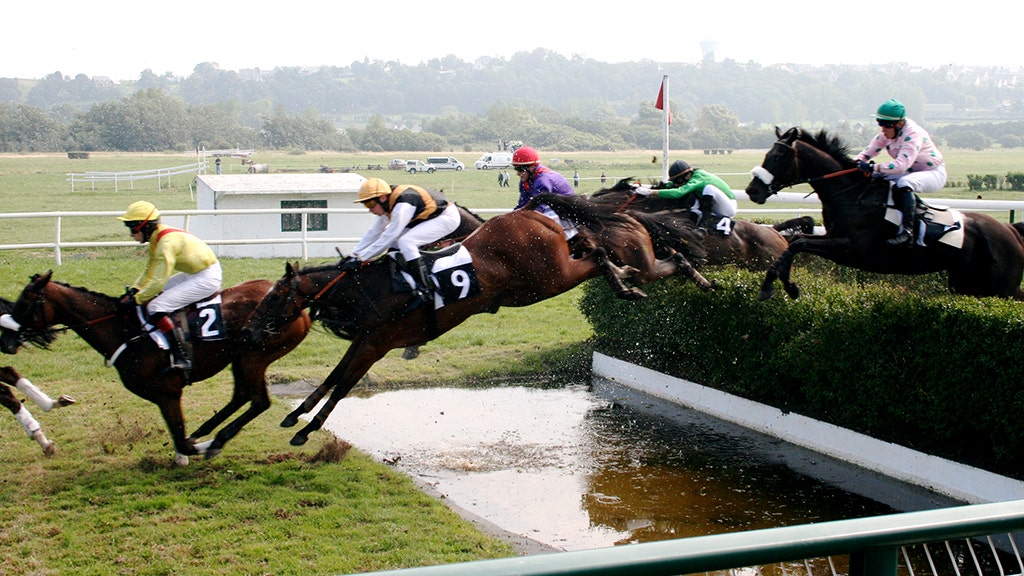Preventing Steeplechase Falls: Men’s Steeplechase Fall

Steeplechase running is a thrilling and challenging event, but it also carries a significant risk of falls. These falls can be painful, debilitating, and can even end a runner’s race prematurely. However, by understanding the common causes of falls and implementing preventative measures, runners can significantly reduce their risk.
Training Program for Preventing Falls
A well-designed training program is crucial for preventing steeplechase falls. It should incorporate exercises that enhance balance, agility, and coordination.
Here is a sample training program that focuses on preventing steeplechase falls:
- Balance Exercises: Balance exercises are essential for maintaining stability, especially during the water jump and when navigating tight turns. Examples include single-leg squats, standing on one leg with eyes closed, and walking on a balance beam.
- Agility Drills: Agility drills improve a runner’s ability to change direction quickly and react to unexpected situations. Examples include ladder drills, cone drills, and shuffle runs.
- Coordination Exercises: Coordination exercises enhance the smooth and efficient movement of different body parts. Examples include jumping jacks, high knees, and butt kicks.
Tips and Strategies for Minimizing Falls, Men’s steeplechase fall
In addition to a comprehensive training program, steeplechase runners can implement several tips and strategies to minimize the risk of falls:
- Proper Water Jump Technique: The water jump is the most dangerous part of the steeplechase. Runners should focus on maintaining a smooth and controlled approach, ensuring their foot lands firmly on the barrier before jumping into the water. They should avoid leaning forward or overextending their arms, as this can lead to loss of balance.
- Awareness of Other Runners: Steeplechase races often involve close contact between runners, especially during the water jump. Runners should be aware of their surroundings and anticipate potential collisions. They should avoid making sudden movements that could endanger other runners.
- Focus on Core Strength: A strong core is essential for maintaining balance and stability. Runners should incorporate core strengthening exercises into their training program, such as planks, crunches, and Russian twists.
Role of Equipment and Footwear
The right equipment and footwear play a crucial role in preventing steeplechase falls.
- Footwear: Steeplechase runners should wear shoes that provide good traction, support, and cushioning. Shoes with a firm sole and a wide base can help to improve stability. Spikes are also essential for providing grip on the track, especially during the water jump.
- Apparel: Runners should wear clothing that allows for a full range of motion and does not restrict movement. They should also avoid wearing loose or baggy clothing that could get caught on the barriers.
Men’s steeplechase fall – The men’s steeplechase is a thrilling event, filled with drama and unexpected turns. One athlete who embodies the excitement and unpredictability of the steeplechase is Soufiane El Bakkali , a Moroccan runner known for his incredible speed and daring tactics.
While a fall in the steeplechase can be devastating, it’s moments like these that showcase the resilience and determination of these athletes, pushing them to overcome obstacles and strive for victory.
Seeing a runner trip over the water jump in the men’s steeplechase is always a heart-stopping moment. It’s a reminder of the incredible athleticism and focus required to navigate this grueling event. The 3000m steeplechase has a long and storied history at the Olympics, a history of grit and glory , and those falls, while unfortunate, are part of what makes the event so captivating.
The next time you watch the men’s steeplechase, keep an eye out for those water jumps – they’re not just obstacles, they’re potential turning points in the race.